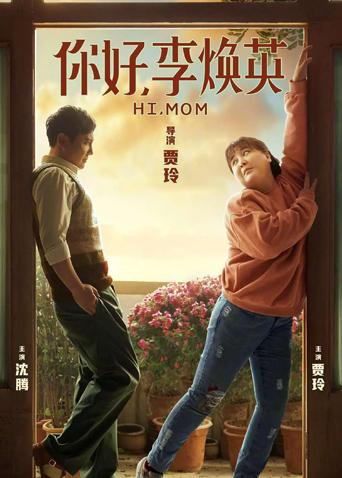女友尼娜在一场车祸中去世之后,中文罗伯试图自杀均未成功。当他开始战胜悲伤,中文逐渐走出阴霾,爱上了一个同事,霍莉。这时尼娜却因为无法在来世安息,开始在他们每次发生关系的时候阴魂不散折磨他们,两人的关系开始变得复杂并岌岌可危……

女友尼娜在一场车祸中去世之后,中文罗伯试图自杀均未成功。当他开始战胜悲伤,中文逐渐走出阴霾,爱上了一个同事,霍莉。这时尼娜却因为无法在来世安息,开始在他们每次发生关系的时候阴魂不散折磨他们,两人的关系开始变得复杂并岌岌可危……

回复 :《红星照耀中国》电影剧组创作灵感及素材就取自同名报告文学——美国记者斯诺根据自身经历创作的《红星照耀中国》一书。影片主要讲述的是1936年美国青年埃德加·斯诺冒险来到中国红色革命区域的的亲历见闻,在采访和见证了毛泽东、周恩来等共产党领导人,以及红军战士和苏区百姓的风采之后,斯诺以饱含激情的生动文笔写成了《红星照耀中国》一书,该书出版后轰动世界,使全球第一次了解到了彼时艰苦抗战背景下中国共产党的真实情况。
回复 :本部纪录片用长达约4个小时的时间讲述了鲍勃·迪伦,这位美国民谣大师的传奇音乐生涯。鲍勃·迪伦,这位堪称美国六十年代反叛文化代言人的传奇歌手,他对音乐的理解和分析从他深刻寓意的歌词中可见一斑。影片聚焦鲍勃·迪伦在六十年代初期成为民谣英雄开始叙述,并穿插多段从未曝光的访问片段,首次真实地披露很多他鲜为人知的画面,记录下这位历久弥新的音乐大师从1961年到1966年间的的传奇历程。由著名导演马丁·斯科塞斯执导的首部人物传记长片《没有家的方向》,荣获2006年第58届黄金时段艾美奖其他和技术类奖项-非剧情类节目最佳混音、其他和技术类奖项-非剧情类节目最佳导演提名、其他和技术类奖项-非剧情类节目最佳剪辑提名等多项大奖。
回复 :In the time of Counter-Reformation, a miller and his son come under investigation by a priest of the Inquisition, when rumors spread that their prosperity comes from working with the Devil.The Devil's Trap is a film directed by František Vlá?il, based on a novel by Alfréd Technik, adapted by František A. Dvorák and Miloš Kratochvíl. It was the first of three historical dramas that Vlá?il made during the Czech New Wave (technically he isn't really a part of the New Wave, however these films were made during the same era of artistic freedom), preceding his more well known Marketa Lazarová (1967) and Valley of the Bees (1968).Set in the late 16th Century during the Catholic Reformation, in the Moravian Karst, situated in what is now the Eastern Czech Republic, it tells the tale of a miller (Vítezslav Vejrazka), and his son Jan (Vít Olmer), who come under suspicion and are investigated by a Jesuit priest of the Inquisition (Miroslav Macháchek), when rumors of witchcraft are spread by the local regent (Cestmír Randa), who is jealous of the miller's prosperity and degree of respect among the local populace.As expected from Vlá?il, this film is a stunning experience all the way through. From the opening shot, an ominous manipulation of perspective with a close up of a mangled figure of Christ dominating the foreground against a tiny figure in black walking along the horizon, to the breathtaking confrontational finale inside the vast stalactite filled Karst caverns, it is a wonderful display of visual mastery.Maybe not quite as impressive as Marketa Lazarová, but still full of astonishing imagery. As seen from unique angles and distinct points of view which highlight the director's remarkable sense of awareness of framing, motion, and positioning on the emotional and dramatic tone of the scene. The most memorable being a repeated shot where the camera is suspended and launched with speed through the air towards the miller's door.The story here is a simple one and I would say more accessible than his later works. With a conventional structure emphasized as much by its plot and characters, than by its expressionistic cinematography or authentic historical detail. The events play out without much surprise, and there is a strong underlying, almost supernatural, mysterious aspect that is left unresolved, in fact barely explored, which is slightly disappointing, but only because it's so fascinating that I wish there was more.Acting is great all around. Particularly the villains: Miroslav Macháchek as the priest, casting a sinister and imposing shadow wherever he goes, and Cestmír Randa as the weasel like regent behind all the persecution. While Vít Olmer brings a charismatic leading man presence in his role as the miller's son Jan, in love with the lovely orphan girl Martina (Karla Chadimová), who becomes a dangerous object of rivalry between Jan and other young men of the village.The film also features the evocative music of Zden?k Liška (perhaps the most prolific composer of the Czech New Wave). In this his second of eleven collaborations with Vlá?il, his compositions are used sparingly, but to great effect, complimenting but never overpowering a scene. The best example of which can be heard in an amazingly shot celebration and dance sequence at the end of the second act.The Devil's Trap might not be a masterpiece, but it is still a strong effort, with a fascinating straightforward story and a glorious historical setting captured beautifully by Vlá?il's unmistakable visual prowess. A fine work that would also be the perfect starter plate to prepare yourself for the challenging feast of Marketa Lazarová or The Valley of the Bees. It even has an easy to digest running time. It's therefore puzzling why this gem remains largely overlooked and ignored.
